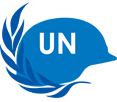MONUSCO Mandate
MONUSCO took over from an earlier UN peacekeeping operation – the United Nations Organization Mission in Democratic Republic of the Congo (MONUC) – on 1 July 2010. The original mandate of the mission was established by Security Council resolution 1925 of 28 May to reflect the new phase reached in the country. It was authorized to use all necessary means to carry out its mandate relating, among other things, to the protection of civilians, humanitarian personnel and human rights defenders under imminent threat of physical violence and to support the Government of the DRC in its stabilization and peace consolidation efforts.
The Council decided then that MONUSCO would comprise, in addition to the appropriate civilian, judiciary and correction components, a maximum of 19,815 military personnel, 760 military observers, 391 police personnel and 1,050 members of formed police units. Future reconfigurations of MONUSCO would be determined as the situation evolved on the ground, including: the completion of ongoing military operations in North and South Kivu as well as Orientale provinces; improved Government capacity to protect the population effectively; and the consolidation of State authority throughout the territory. The mandate of MONUSCO was further detailed in resolution 2053![]() adopted by the Security Council on 27 June 2012.
adopted by the Security Council on 27 June 2012.
On 28 March 2013, faced with recurrent waves of conflict in eastern DRC threatening the overall stability and development of the country and wider Great Lakes region, the Security Council decided, by its resolution 2098, to create a specialized “intervention brigade” for an initial period of one year and within the authorized MONUSCO troop ceiling of 19,815. It would consist of three infantry battalions, one artillery and one special force and reconnaissance company and operate under direct command of the MONUSCO Force Commander, with the responsibility of neutralizing armed groups and the objective of contributing to reducing the threat posed by armed groups to state authority and civilian security in eastern DRC and to make space for stabilization activities.
The Council also decided that MONUSCO shall strengthen the presence of its military, police and civilian components in eastern DRC and reduce, to the fullest extent possible for the implementation of its mandate, its presence in areas not affected by conflict in particular Kinshasa and in western DRC.
On 28 March 2014, the Security Council, by its resolution 2147, extended the mandate of MONUSCO until 31 March 2015 and decided that the renewed mandate would also include MONUSCO’s Intervention Brigade — “on an exceptional basis and without creating a precedent or any prejudice” — within the authorized troop ceiling of 19,815 military personnel, 760 military observers and staff officers, 391 police personnel and 1,050 formed police units.
At the same time, the Council noted the need for a clear exit strategy and decided that the Mission’s further reconfigurations and mandates should be based on the evolving situation and progress towards several objectives set out in accordance with its three priorities — protecting civilians, stabilizing the country, and supporting implementation of the Peace, Security and Cooperation Framework for the Democratic Republic of the Congo and the region.
For the adjusted mandate of the Mission, please see resolution 2147, operative paragraphs 1-7.
